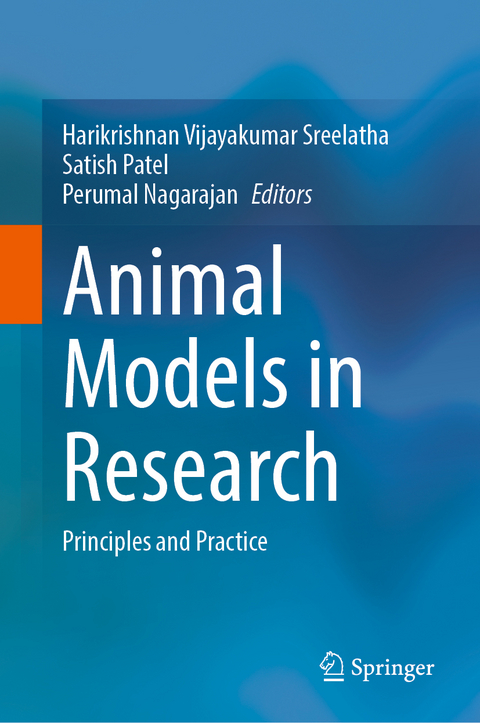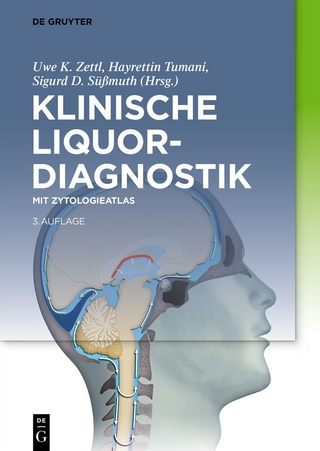
Animal Models in Research
Springer Nature (Verlag)
978-981-97-0047-9 (ISBN)
This book describes the development of animal models widely used in biomedical research using step-wise instructions and photographs. Showcasing a wide range of species from zebra fishes, birds, rodents, rabbits, dogs, and pigs, the book includes detailed methodology on how to work with these species and to develop various models. The animal models in neurology including stroke, Alzheimer’s disease, Parkinson’s disease, and Schizophrenia; Animal models in cancer research, sleep disorders, and cardiovascular diseases are described to meet the understanding of researchers who plan to replicate these models in their laboratories. In depth detailing on the development of targeted gene knockouts and transgenics, implantation models that are used in toxicology studies, and pharmacokinetic studies in pigs and dogs are a highlight. Further, the book describes pharmacologic, chemically induced, surgically induced, microbiologically induced, infectious models, models for neurobehavioral studies, oncology research, and pain research. The book has dedicated sections on anesthesia and analgesia and teaches procedures like venous cut-downs and cannulations in pigs and dogs, and endotracheal intubation, mechanical ventilation and thoracotomy in rodents and will serve as a self-training tool. Concepts in the field of animal model development are explained using examples. Sample size selection, study design, and statistical evaluation of experiments involving laboratory animals are explained to enable young researchers to practically understand the nuances. This book will be a valuable tool for academicians, students, scientists, and veterinarians and will benefit equally who are new to the field and who are already working with laboratory animals.
Harikrishnan Vijayakumar Sreelatha is a veterinarian, who graduated from the College of Veterinary and Animal Sciences, Mannuthy, Kerala, India and he joined Sree Chitra Tirunal Institute for Medical Sciences and Technology to start working with porcine models in a drug-eluting stent pre-clinical safety and efficacy evaluation programme in 2003. During this period, he also worked on ovine and caprine models as well. Since 2005, he started to work with rodents and rabbits for various proof of concept projects. In 2009, he received the International Young Scientist Award offered by the Japanese Association of Laboratory Animal Science for his work in hindlimb ischemic rabbit model. He joined for a Master’s programme in laboratory animal science at the Department of Veterinary Disease Biology, University of Copenhagen, Denmark with scholarships and travel grants from Laboratory animals Ltd. United Kingdom, UFAW, UK, Federation of European laboratory Animal Science Associations (FELASA), EU, Scandinavian (SCAND-LAS), Swiss (SGV), and British Laboratory Animal Science Associations awards during 2010-14. Later, he joined the PhD programme at the Department of Experimental Medicine, University of Copenhagen in 2016-23. He is currently a serving member of the Committee for the Control and Supervision of Experiments on Animals (CCSEA), New Delhi, which is the statutory body regulating animal experimentation in India. He also served as a working group member to revise the syllabus for minimum standards for Veterinary Practice regulations for Laboratory Animals formed by The Veterinary Council of India, a statutory body and a member of the Health Product Screening committee of Indian Council of Medical Research (ICMR), Government of India to evaluate Phase-I clinical trials readiness of medical products and drugs. He has several International academic grants, projects and scholarships and has widely published in laboratory animal science and medicine and has over 55 peer-reviewed publications, and over 8 book chapters. His current area of interest is refinement of animal models and refinement of rodent care, handling, and housing standards. Dr. Satish Patel is working as general manager and head of Animal Research Facilities, Zydus Research Centre, Ahmedabad, Gujarat, India. He is a veterinarian and done his Ph.D in veterinary pharmacology and toxicology from Anand Agricultural University, Gujarat, India. He has been working with laboratory animals for more than 24 years. He has performed key role in establishing many laboratory animal facilities at different organizations, and among these few are GLP and AAALAC accredited. As part of research and development activities that he is leading in Zydus Research Centre, he travels and works with many foreign CROs in the USA, Canada, and Europe for preclinical studies including veterinary Bio availability and Bio equivalence studies. He has also developed many preclinicaldisease models, in different therapeutic areas like diabetes, inflammation, arthritis, dyslipidemia, cancer etc. using different novel methodologies and techniques. He has enormous knowledge and experience in care, management, breeding and regulatory experimentation of laboratory animals including inbreds, outbreds, mutants, transgenics (genetically modified), immune-deficient and humanized animal models, dogs and non-human primates. He has also to his credit, a few innovative products which are commercialized and, are in the market, where he has been involved in basic research and development. He also worked for B.V. Patel Pharmaceutical Education Research & Development (B.V. PERD) Centre, Hester Bioscience ltd, and Cadila Pharmaceutical Pvt ltd, Ahmedabad in the field of biomedical research and development. He has undergone several training programs on laboratory animal management, health monitoring and animal model development. He served as a working group member to revise the syllabus for minimum standards for veterinary practice regulations for laboratory animals formed by The Veterinary Council of India (VCI), a statutory body. He has published more than 25 research publications in national and international peer-reviewed journals. He is also member of few societies of veterinary science and laboratory animal science. His current area of interest is improvement of current practices of laboratory animal care and management and refining methodologies in animal experimentation. Dr. Perumal Nagarajan is working as head, scientist at laboratory animal facility, National Institute of Immunology, New Delhi, India. Being a veterinarian, he has been working on laboratory animals for more than 20 years. He has vast knowledge and expertise in the care, management, breeding and medicine of laboratory animals including genetically modified animals, immunodeficient animal models, humanized animal models and non-human primates that are beingused in research. Before joining NII, he worked at Central Drug Research Institute (CDRI) and the National University of Singapore (NUS). He had undergone diverse training in laboratory animals including imaging modalities and microsurgery abroad. His research interest is in animal models for various diseases and in particular metabolic diseases. He has published more than 50 research articles in peer-reviewed international journals authored book chapters and edited the book “Essentials of Laboratory Animal Science: Principles and Practices” Springer. He is also serving as a reviewer for various international journals and he is a member of several national and international scientific societies related to laboratory animal science.
1. The Key Concepts of Animal Models.- 2. Ethics Welfare, 3R’s & Legislation in Biomedical Research- A Practical Approach.- 3. Experimental Design and Statistics in Animal Research.- 4. New Approach Methodologies: Rethinking Preclinical Evaluation of Pharmaceuticals and Medical Devices Beyond Animal Models.- 5. Basic techniques to facilitate small animal experimentation.- 6. Zebrafish: An animal model in biomedical research.- 7. Avian Models for Biomedical Research.- 8. The naked mole-rat (Heterocephalus glaber): a promising non-traditional model for biomedical research.- 9. Pharmacologically induced Animal models for various Diseases.- 10. Animal Models for Gut Microbiome Research.- 11. Animal Model for Alzheimer’s disease, Parkinson’s disease and Schizophrenia.- 12. Animal models in sleep research.- 13. Animal Models for Pain Research.- 14. Animal models in cancer research: Revolutionizing the field of oncology.- 15. Animal models of infectious diseases.- 16. Modeling Ischemic Stroke by Middle Cerebral Artery Occlusion in Rats.- 17. Dog as an animal model in preclinical research.- 18. Swine as an animal model in preclinical research.- 19.Evaluation of Biomaterials- Histopathology Techniques Used in the Screening of Biomaterials to Ensure Biocompatibility.- 20. Methods in Toxicologic Pathology.
| Erscheinungsdatum | 04.04.2024 |
|---|---|
| Zusatzinfo | 230 Illustrations, color; 78 Illustrations, black and white; XV, 640 p. 308 illus., 230 illus. in color. |
| Sprache | englisch |
| Maße | 155 x 235 mm |
| Themenwelt | Medizin / Pharmazie ► Medizinische Fachgebiete ► Laboratoriumsmedizin |
| Naturwissenschaften ► Biologie | |
| Veterinärmedizin ► Klinische Fächer ► Versuchstiere | |
| ISBN-10 | 981-97-0047-7 / 9819700477 |
| ISBN-13 | 978-981-97-0047-9 / 9789819700479 |
| Zustand | Neuware |
| Haben Sie eine Frage zum Produkt? |
aus dem Bereich


